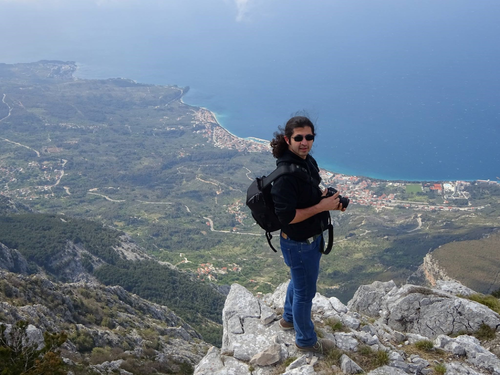 Lepidoptera (i.e. moths and butterflies) is one of the four most diverse orders of organisms - BIG4 - on earth. Despite a wide variety of research being undertaken, there is still a lot to discover about them. Scientists are discovering new species, studying ecosystem interactions, and the list goes on.
Lepidoptera (i.e. moths and butterflies) is one of the four most diverse orders of organisms - BIG4 - on earth. Despite a wide variety of research being undertaken, there is still a lot to discover about them. Scientists are discovering new species, studying ecosystem interactions, and the list goes on.
I am interested in addressing questions such as: How are they related? When did a particular species appear or go extinct? What was the speed of these processes in different periods? When were particular areas colonized?
To answer these questions, I first need to receive samples from all over the world. I then need to obtain the genetic information of a few genes and combine it with available data to construct a phylogeny of the group. I use the resulting tree to study the evolution of different branches through time. Using statistical models, I estimate the diversity of the study group at different time periods. And finally, I try to answer the question: is it possible to see the effect of mass extinctions in the history of this group? During this process I will hopefully be able to answer some of my questions, but I also expect a lot of new questions to arise.
So far, my main focus has been on the time calibrated phylogeny of the Geometrid moth family. This group of moths is one of the most diverse families within Lepidoptera, but very little has been done to resolve their phylogeny. To obtain a good time-calibrated phylogeny and study the diversification dynamics of this family, some additional challenges exist, for example the sampling bias. It is normally a lot easier to obtain samples from developed countries, as the fauna here is usually better studied. Due to this bias, the diversity present in the developing countries is usually under-sampled and underestimated. This occurs because of the cost associated with sampling at these locations and the lack of local specialists. Nevertheless, in order to better understand global questions, we really need better global sampling.
Due to our networks of partners around the world, we have been able to obtain samples from hard to access locations. Our dataset, is the largest obtained for this family, consisting of 1200 samples and covering around 5% of the groups diversity. It is also the best dataset in terms of sampling homogeneity of the global diversity of the family. So, stay tuned to hear a lot of exciting results about diversification of the group in a few months!

Being an evolutionary biologist BIG4 project opened my eyes to all the interesting possibilities the amazing world of insects offer us to study different evolutionary questions. Apart from the very interesting scientific value of this experience I discovered a small community where we all became very good friends. This priceless network enriches both professional and personal development of all of us which hopefully will result in more and better future collaborations.
My next steps will be to perform similar analyses with other families of Lepidoptera, so we can compare the diversification patterns, allowing us to get a broader idea of evolutionary paths butterflies and moths followed to reach the diversity we see today.
Apart from the analytical and biologically interesting results that we obtain in this project, we are also working on the development of new methods to overcome one of the biggest challenges we usually encounter in similar studies: high costs of obtaining big amounts of genetic data for large numbers of samples. The new methods we have designed can be used by many other groups to produce genetic information without any major first investment, i.e. using their normal molecular lab material. This also can help to avoid new samplings as old DNA extracts and small amount of them will also be enough to produce the amount of information we are interested in.

